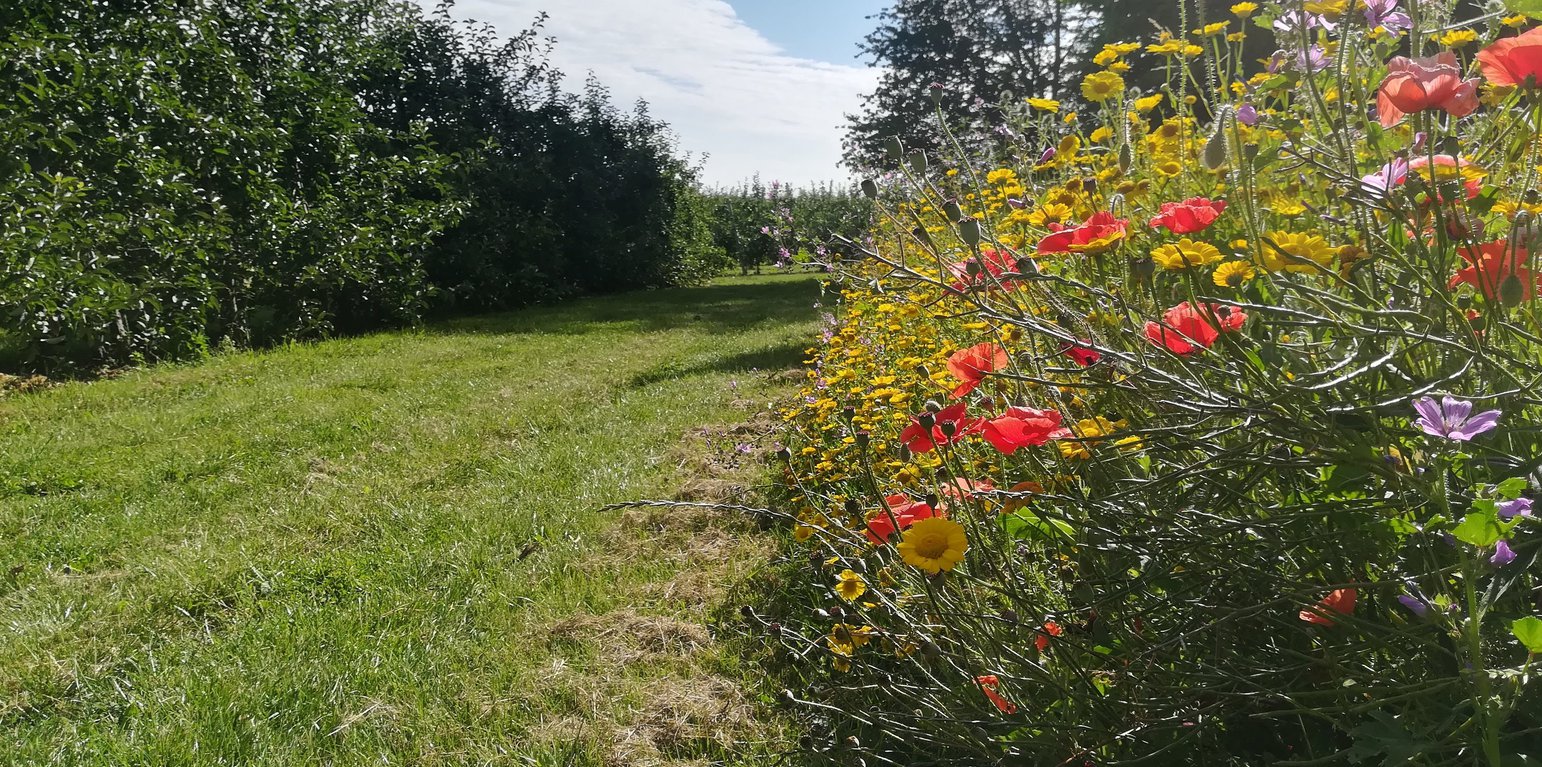



Flower strips on field margins have been established in the centre of Belgium in the region ‘Pajottenland’. The Pajottenland is predominantly farmland and lies mostly between the rivers Dender and Senne in close proximity to Brussels. Pajottenland has historically provided food and drink for the citizens of Brussels. This SLM practice was established in September 2019 on parcels on 7 different farms in Pajottenland. Such flower strips are 3-12 metres wide and are established at the edges of fields to provide nectar and pollen to attract beneficial species that control pest species. It is estimated the beneficial effect of the flower strips on field margins extends about 50 metres into the field.
The strips provide a habitat for natural enemies of various crop and livestock pests to control and decrease their population and to reduce the necessity of spraying pesticides. Care it taken in choosing and sowing flower species that attract arthropods with a role in biocontrol, such as hoverflies, lacewings, parasitoids and ladybirds. The flower strips conserve ecosystems and improve biodiversity, also facilitating ecosystem-based disaster risk and integrated soil fertility management.
Farmers dedicate strips of land on field margins to flowers (perennial herbaceous plants). Work includes management of the soil, sowing seeds, mowing flowers and removal of residues. Costs are related to farmers working hours, sowing and mowing equipment, pesticides (if necessary) and seed costs. Savings are related to providing a habitat for natural pest controls, thereby reducing pest in crops and increasing yields.
What do land users like about the technology?
- increased recreational impact for humans due to the beauty of the flower strips
- increased biodiversity (beyond natural pest enemies)
What do land users dislike about the technology?
- reduced overall income from crops (due to reduced area)
- the costs - unless subsidies become more widely available
The compilation of this SLM is a part of the European Interreg project FABulous Farmers which aims to reduce the reliance on external inputs by encouraging the use of methods and interventions that increase the farm’s Functional AgroBiodiversity (FAB). Visit www.fabulousfarmers.eu and www.nweurope.eu/Fabulous-Farmers for more information.
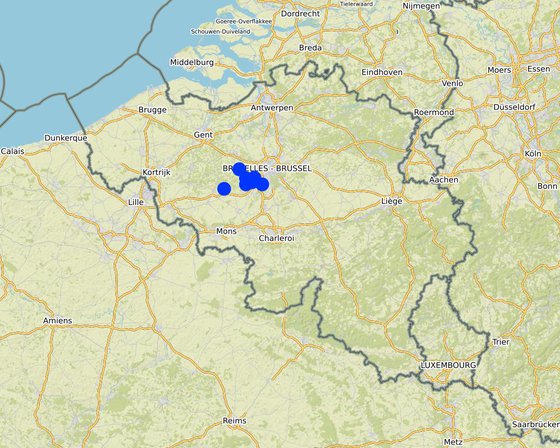
Lieu: Pajottenland, Flemisch Brabant, Belgique
Nbr de sites de la Technologie analysés: 2-10 sites
Diffusion de la Technologie: appliquée en des points spécifiques ou concentrée sur une petite surface
Dans des zones protégées en permanence ?: Non
Date de mise en oeuvre: 2019
Type d'introduction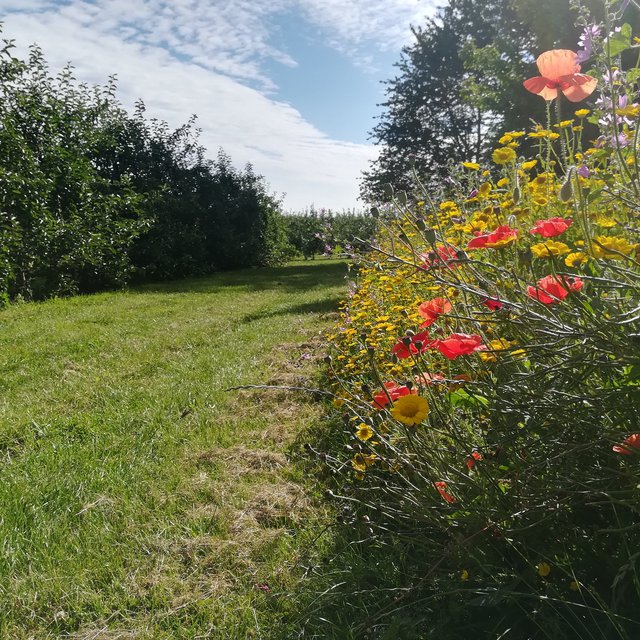
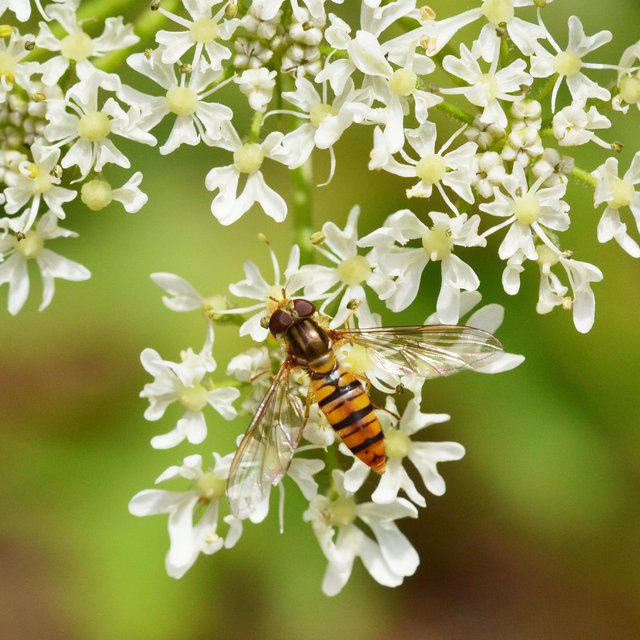




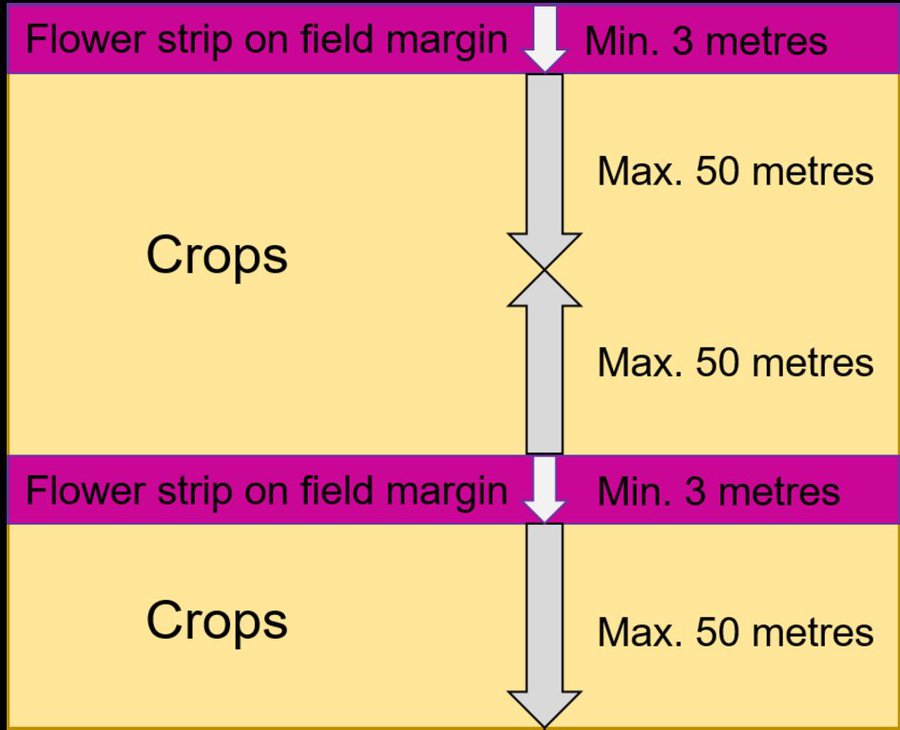
| Spécifiez les intrants | Unité | Quantité | Coûts par unité (€) | Coût total par intrant (€) | % des coût supporté par les exploitants des terres |
| Main d'œuvre | |||||
| Farmer time for establishment | Days per establishment | 3,0 | 240,0 | 720,0 | 100,0 |
| Equipements | |||||
| Machine to cultivate the land (already owned by farmer) | 1 | 1,0 | 100,0 | ||
| Machine for sowing after cultivating (already owned by farmer) | 1 | 1,0 | 100,0 | ||
| Mower to cut and clear flowers (already owned by farmer) | 1 | 1,0 | 100,0 | ||
| Matériel végétal | |||||
| Flower seeds | per ha | 1,0 | 900,0 | 900,0 | 30,0 |
| Autre | |||||
| Loss of income with reduction of cultivated area for crops due to flower strips | ha | 1,0 | 500,0 | 500,0 | 100,0 |
| Coût total de mise en place de la Technologie | 2'120.0 | ||||
| Coût total de mise en place de la Technologie en dollars américains (USD) | 2'329.67 | ||||
Beneficial species control pests that leads to improved crop quality
More beneficial species and fewer pests reduces reliance on pesticide use
Flowers attract more beneficial species
Flowers attract more beneficial species that can control pests and diseases